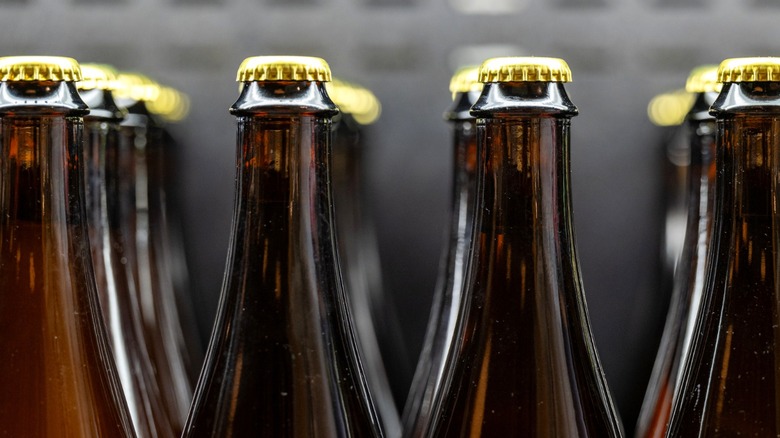Why Temperature Is Key For Properly Storing Craft Beer
Summer is the season for beer enthusiasts to explore the coolest breweries around the country. They're often full of exciting events, good eats, and new craft beers worth trying (and bringing home). Nothing beats the heat like an ice-cold beer on draft, and it's because of proper storage and technique. To help you keep your craft beer in top shape, Chowhound spoke exclusively with an expert to find the right temperature.
Stephen Alexander is the Sales and Marketing Director for Tall City Brewing Company in Midland, Texas, and he serves on the Public Relations and Marketing Committee for the Texas Craft Brewers Guild. He graciously informed us of the importance of keeping craft beers cool. "Refrigerate MOST craft beers (especially hop-forward styles like IPAs, pale ales, pilsners)," Alexander says, noting, "Cold slows staling and preserves aromatics." Darker, high-ABV beers (stouts, barleywines) are okay to store at room temperature if you plan to cellar/mature them for weeks or months, but they're ideal below 55 degrees Fahrenheit.
Last year, research by the Chinese Academy of Sciences explored why people prefer the taste of cold beer. Low temperatures cause the ethanol-water molecules to form a chain-like shape, corresponding to a more forward flavor. High temperatures cause these molecules to form a pyramid-like shape, which creates a less potent flavor. Thus, the sweet spot for serving beer lies between 40 and 50 degrees Fahrenheit.
Preserve the flavor of craft beer with these storage tips
Stephen Alexander warns against storing craft beer where it's exposed to heat, light, or oxygen. Heat accelerates oxidation and hop‐aroma loss, causing a taste he describes as "stale, cardboardy, and 'off.'" "Lightstruck" compounds in beer create the classic skunky aroma when UV rays hit hop oils in clear or green glasses. Even tiny leaks allow oxygen into caps or cans, leading to flat, dull flavors over time.
"Never store in direct sunlight — bottles can get 'skunked' — or near heat sources," says Alexander. "That's why beers like Corona or Landshark [have] that skunky taste. Also a reason a lot of bars sell beer in 'chilled' glasses to cover up the taste and smell."
Bottled and canned beer lasts longer in the fridge than at room temperature, so for craft beer on the go, it's worth bringing a cooler. Place the cooler somewhere in the shade, away from direct sunlight, and drain any melted water. Alexander's pro tip is to add a handful of salt to the ice. While salt is used to melt ice, it also lowers the freezing point of water. Essentially, it helps transfer the actual coldness from the ice to the drinks, similar to the salt trick for making ice cream in a bag. When you're ready to crack open a cold one, just pop it in a koozie and enjoy the best flavor craft beer can offer.

